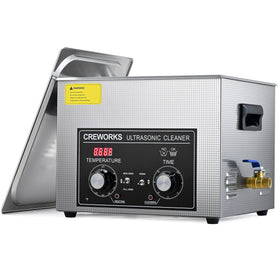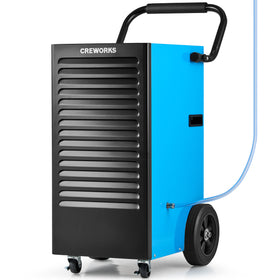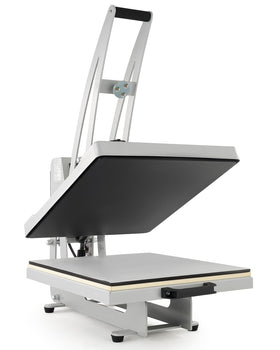Ultrasonic Cleaning involves the use of high-frequency sound waves, above the range of human hearing, to remove a variety of contaminants from parts immersed in aqueous cleaning media. The contaminants can be dirt, oil, grease, buffing/polishing compounds, and mold release agents, just to name a few. Materials that can be cleaned by ultrasonic cleaning systems include metals, glass, ceramics, and so on. Ultrasonic agitation can be used with a variety of cleaning agents.
Typical applications found in the metals industry are removing chips and cutting oils from cutting and machining operations, removing buffing and polishing compounds prior to plating operations, and cleaning greases and sludge from rebuilt components for automotive and aircraft applications.
Benefits of Ultrasonic Cleaning
Ultrasonic cleaning is powerful enough to remove tough contaminants, yet gentle enough not to damage the substrate. It provides excellent penetration and cleaning in the smallest crevices and between tightly spaced parts in a cleaning tank. The use of ultrasonic cleaning machines has become increasingly popular due to the restrictions on the use of chlorofluorocarbons. The use of ultrasonics enables the cleaning of intricately shaped parts with an effectiveness that corresponds to that achieved by vapor degreasing, but in a more comprehensive, high-tech, and ecologically friendly manner.
The Process of Ultrasoic Precision Cleaning
How does ultrasonic cleaning work? In a process termed cavitation, micron-size bubbles form in the ultrasonic cleaning fluid and grow due to alternating positive and negative pressure waves in a solution. The temperature inside a cavitating bubble can be extremely high, with pressures up to 500 atm. Ultrasonic cleaning systems create an implosion event, which, when it occurs near a hard surface, changes the bubble into a jet about one-tenth the bubble size, which travels at speeds up to 400 km/hr toward the hard surface. With the combination of pressure, temperature, and velocity, the jet frees contaminants from their bonds with the substrate. Because of the inherently small size of the jet and the relatively large energy, ultrasonic cleaning can reach into small crevices and remove entrapped soils very effectively.
Equipment Types & Buying Guide
Ultrasonic cleaning devices generally fall into these categories based on their application and size:
-
Benchtop Ultrasonic Cleaners
Ideal for laboratories, jewelry shops, and small workshops. Tank capacities usually range from 2 to 30 liters. These models often feature stainless steel tanks for corrosion resistance, compact size to save space, and may include digital controls, adjustable power settings, and multi-frequency options for versatile cleaning.
-
Industrial Ultrasonic CleanersDesigned for factories and large-scale workshops, typically with tank sizes over 30 liters. Built for durability and continuous operation, industrial cleaners can have single or multiple tanks to support multi-step cleaning processes such as washing, rinsing, and drying—resulting in higher efficiency and better cleaning quality.
-
Immersion Ultrasonic Cleaners
These systems have ultrasonic transducers installed directly into existing tanks or containers to suit custom cleaning needs or complex parts.
When selecting a cleaner, consider these key aspects:
-
Tank Size & Object Dimensions: Choose a tank size that accommodates the items you need to clean.
-
Ultrasonic Frequency & Power: Lower frequencies (20-40 kHz) work well for heavy dirt and larger items, while higher frequencies (above 100 kHz) are better for delicate or fine objects.
-
Material Quality & Durability: Prefer stainless steel tanks made from 304 or 316 grade for corrosion resistance and longevity.
-
Additional Features: Adjustable power levels, multi-frequency capability, degassing functions, and digital interfaces can enhance cleaning results and usability.
-
Maintenance & After-Sales Service: Reliable customer support and ease of maintenance improve your long-term experience.
Frequently Asked Questions (FAQ)
What are the common types of ultrasonic cleaners?
The main types are benchtop, industrial, and immersion cleaners, each suited to different cleaning scales and demands.
How do I choose the right ultrasonic cleaner?
Consider the size of items you want to clean, the tank capacity, required frequency and power, type of cleaning solution, and your working environment. For a reliable and efficient option, consider Creworks ultrasonic cleaners—they offer a range of models suitable for both professional and home use.
Is ultrasonic cleaning suitable for all materials?
Most metals, plastics, and glass can be cleaned safely. However, fragile or specially coated items require careful selection of frequency and cleaning duration.
How long does a cleaning cycle usually take?
Typically, 3–6 minutes is sufficient, but this varies depending on the dirt level and material.
What types of cleaning solutions can I use?
Options include deionized water, mild detergents, or specially formulated ultrasonic cleaning fluids to improve cleaning efficiency and protect your equipment.
How should I maintain the equipment?
Regularly clean the tank, avoid foreign objects contacting the transducers, change cleaning solutions when dirty, and follow recommended maintenance schedules to keep the device functioning well.
My name is Michael Anderson, and I am a senior engineer specializing in heavy machinery and equipment. I hold a degree in mechanical engineering and have extensive experience in mining and construction industries worldwide. My aim is to simplify complex technical concepts, making them accessible and understandable to a wide audience.








Leave a comment